Generative AI at the Gate: Impressions from the World EPA Congress 2025
World EPA Congress 2025, Amsterdam
Was this year’s EPA the last of the pre-AI era? Judging by the number of newly AI-enabled service providers at EPA 2025, a tectonic shift is under way in the industry. This shift was reflected in two (out of four!) keynotes on AI, and a highly popular track on digital transformation. Why is that and what lies ahead?
As the AI mega-trend sweeps across all industries, the question on everyone’s mind is: will it touch my industry tangentially, or transform it forever? For health technology market access and pricing, there are good reasons to believe that artificial intelligence will be disruptive in the true sense of the word, and that we are coming to the end of slow change. What happens next will happen suddenly, for three reasons.
First of all, looking at the workflows surrounding value dossier generation, HEOR and price negotiation, we see an unusually large share of tasks involving information gathering,, condensing, connecting, and aggregating. This is prime territory for AI automation. Secondly, the majority of these tasks are fairly standardized, with large bodies of historical data that can serve as training data. A clear case where AI can play to its strengths. And thirdly, with the advent of large language models, the technological breakthrough has happened. The next step is the translation into applications.
Where are we today? I thought about it over the weekend, and realised that for me, three points stand out.
The end of the beginning
Yet underneath the buzz, it was clear that the conversation at EPA 2025 by and large focused more on making sense of this new technology, than reporting concrete success stories.
But there were highlights, too. Bill Malcolm from Bristol Myers Squibb shared granular insights into a market access use case, where they cut down timelines for country adaptations of HTA materials from 4-5 months to around a week. They also shared useful best practices for approaching AI, e.g. “assess which tasks are AI-able, then break them down” and “design quality assurance processes throughout the workflow”, and highlighted the need for cross-functional teams that are fluent in both: AI and healthcare.
Similarly, on a more technical level, Prof. Mondher Toumi’s talk stood out, with rigorous out-of-sample evaluations of AI tools, e.g. for systematic literature research, granular error analysis (confusion matrices) and even SHAP values, delighting the rare mathematician in the audience (me). Prof Toumi’s conclusion: “Al will be unavoidable and ubiquitous in the short future”.
Band Aid AI, for now
Across many industries, a first response to the looming AI wave has been to add chatty assistants, document summarization or creative kick-starter features to existing software. This pattern was evident at EPA 2025 too, as booths (and keynotes) showed supposedly clever agents, and even robots on MaRS.
But will this superficial adoption of AI make a difference to real-world workflows? Or will they fade away like Microsoft’s notoriously unloved “Clippy” of the 90's?
One could argue that the market access and pricing industry is an outlier, in that large bodies of text and data lie at the heart of its value creation. As such, it may gain outsized, quick-win, efficiency gains from straightforward applications of generative AI. However, lessons learned from first-movers on AI strike a cautionary note: controlling hallucinations and false positives is harder than it initially seems. Tailoring user interfaces to the actual needs of expert users, rather than plugging in a chatbot, takes time.
In this regard, Girisha Fernando (CEO Lyfegen) showed a promising proof-of-concept (release expected in Q3) of a pricing simulator, which neatly combines the strength of structured data and parametrization with LLM’s ability to extract information from large bodies of text, and produce reasoned justifications.
More anecdotes than data
For a conference centered on hard evidence, AI at EPA 2025 was heavy on anecdotes, and weak on data. Real numbers on adoption, workflow impact and quality were rare, reflecting the current focus on experimentation.
But some are more ahead than others. In his talk, Matthias P. Schönermark (CSO kintiga) presented a strategically well-reasoned approach to AI, and an “Endpoint Result Interpreter” (EPRI) application, along with a systematic evaluation of time-savings (>50% on average per medical writer) collected over eight months of routine use. According to kintiga, EPRI is already licensed to clients as part of a managed service package, and further tools will follow in 2025, eventually growing into an integrated end-to-end suite.
EPA 2026: The first real AI read-out?
Extrapolating from AI’s current momentum, we will probably get to a tangible, intermediate read-out by EPA 2026. Inevitably, the picture will be mixed: some AI assistants will have turned out more frustrating than helpful, and not all AI-enabled services models will have realised the hoped-for traction with big pharma clients.
But for more narrowly defined tasks, AI will have become the new normal by 2026, forever changing the nature of our work for the better. It is from these near-term wins that a growing understanding of artificial intelligence technology will propel the more visionary applications forward.
As an industry, it is our obligation to embrace every opportunity to automate-away tasks, so that we can focus on what really matters: bringing ever more advanced therapies to patients, as fast as we can.

